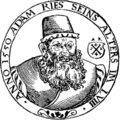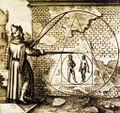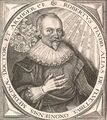Template:Selected anniversaries/January 17: Difference between revisions
No edit summary |
No edit summary |
||
| Line 47: | Line 47: | ||
||1786: Comet Encke or Encke's Comet (official designation: 2P/Encke) is a periodic comet that completes an orbit of the Sun once every 3.3 years. (This is the shortest period of a reasonably bright comet; the faint main-belt comet 311P/PANSTARRS has a period of 3.2 years.) Encke was first recorded by Pierre Méchain in 1786, but it was not recognized as a periodic comet until 1819 when its orbit was computed by Johann Franz Encke | ||1786: Comet Encke or Encke's Comet (official designation: 2P/Encke) is a periodic comet that completes an orbit of the Sun once every 3.3 years. (This is the shortest period of a reasonably bright comet; the faint main-belt comet 311P/PANSTARRS has a period of 3.2 years.) Encke was first recorded by Pierre Méchain in 1786, but it was not recognized as a periodic comet until 1819 when its orbit was computed by Johann Franz Encke | ||
File:Antoine Becquerel.jpg|link=Antoine César Becquerel (nonfiction)|1809: Physicist and [[APTO]] field engineer [[Antoine César Becquerel (nonfiction)|Antoine César Becquerel]] discovers new class of [[Gnomon algorithm]] functions which use [[Electricity (nonfiction)|electricity]] to detect and prevent [[crimes against physical constants]]. | |||
||1833: Friedrich Koenig dies ... inventor best known for his high-speed steam-powered printing press, which he built together with watchmaker Andreas Friedrich Bauer. This new style of printing press could print up to 1,100 sheets per hour, printing on both sides of the paper at the same time. Pic. | ||1833: Friedrich Koenig dies ... inventor best known for his high-speed steam-powered printing press, which he built together with watchmaker Andreas Friedrich Bauer. This new style of printing press could print up to 1,100 sheets per hour, printing on both sides of the paper at the same time. Pic. | ||
Revision as of 17:54, 18 January 2020
1492: Mathematician Adam Ries born (uncertain). He will write textbooks for practical mathematics, promoting the advantages of Arabic/Indian numerals over Roman numerals.
1551: Writer, humanist, and historian Pedro Mexía dies. He wrote Silva de varia lección ("A Miscellany of Several Lessons"), which became an early best seller across Europe.
1552: Mathematician and alleged time-traveller Anarchimedes uses Gnomon algorithm functions to commit crimes against mathematical constants.
1574: Astrologer, mathematician, cosmologist, Qabalist and Rosicrucian apologist Robert Fludd born.
1647: Astronomer Elisabeth Hevelius born. One of the first female astronomers, Hevelius will be called "the mother of moon charts".
1809: Physicist and APTO field engineer Antoine César Becquerel discovers new class of Gnomon algorithm functions which use electricity to detect and prevent crimes against physical constants.
1835: Mathematician, engineer, cartographer, economist, and crime fighter Pierre Charles François Dupin uses choropleth map to detect and prevent crimes against mathematical constants.
1903: The short film Electrocuting an Elephant is released. It documents the deliberate execution of an elephant named Topsy.
1904: Outbreak of Scrimshaw abuse linked to last year's release of Electrocuting an Elephant.
1911: Statistician, progressive, polymath, sociologist, psychologist, anthropologist, eugenicist, tropical explorer, geographer, inventor, meteorologist, proto-geneticist, and psychometrician Francis Galton dies.
1949: Computer scientist Anita Borg born. She will found the Anita Borg Institute for Women and Technology.
1958: Gnomon algorithm forecasting models indicate that an American hydrogen bomb will be lost within the next thirty days.
1961: U.S. President Dwight D. Eisenhower delivers a televised farewell address to the nation three days before leaving office, in which he warns against the accumulation of power by the "military–industrial complex."
1962: Industrialist, military contractor, and alleged crime boss Colonel Zersetzung tells reporters that the military-industrial complex is "the most profitable venture ever undertaken by humanity."
1965: Extract of Radium opens new retail outlet in Palomares, Spain, in preparation for the Palomares nuclear weapons event.
1966: Palomares incident: A B-52 bomber collides with a KC-135 Stratotanker over Spain, killing seven airmen, and dropping three 70-kiloton nuclear bombs near the town of Palomares and another one into the sea.
1969: Mutant culture of Saccharomyces cerevisiae computing Gnomon algorithm functions unexpectedly develops artificial intelligence.
1997: Astronomer and academic Clyde Tombaugh dies. He discovered Pluto, as well as many asteroids.
2001: Mathematician and computer scientist Tom Kilburn dies. Over the course of a productive 30-year career, he was involved in the development of five computers of great historical significance.
2018: Signed first edition of Angry Feller sells for fifty dollars in charity auction to benefit victims of crimes against mathematical constants.



















